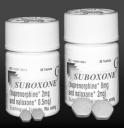 Commentary by Joshua Lee MD, Ellie Grossman MD and Marc Gourevitch MD, NYU Division of General Internal Medicine
Commentary by Joshua Lee MD, Ellie Grossman MD and Marc Gourevitch MD, NYU Division of General Internal Medicine
Substance abuse remains a leading cause of disease and mortality in the US, yet it is rarely addressed in general practice settings. In the past, clinicians could point to a relative paucity of effective interventions by way of explaining their disengagement in the care of these medical disorders. In recent years, however, effective pharmacotherapies have emerged for two classes of substances that are particularly destructive when abused, as they commonly are: opioids (heroin and prescription narcotics) and alcohol. In this two-part entry, we will review the current state-of-the-art in strategies for addressing these conditions in the office-based practice setting. The great majority of affected patients do not seek dedicated substance abuse treatment programs yet do interact with physicians for other reasons. With the new tools available to them, office-based physicians now therefore have the opportunity to substantially increase access to effective treatment of opioid and alcohol abuse and dependence. Part 1 follows below. Part 2 will be posted next week.
I. Office-based opioid treatment.
Buprenorphine, a partial mu opioid receptor agonist, was approved by the FDA in 2002 for the treatment of opioid dependence in office-based settings.(CSAT 2004) This development has ushered in a new treatment paradigm for opioid disorders – that of treating them pharmacologically in primary care practices, as distinct from traditional methadone maintenance treatment programs. Due to its ‘ceiling effect,’ it is virtually impossible to overdose on buprenorphine, making it safer than methadone, and resulting in the DEA classifying it as a Schedule III compound. In its most widely available form, buprenorphine is marketed as a compound mixture with naloxone (brand name ‘Suboxone’), to deter its misuse by injection. A physician need only complete a relatively brief training course in order to obtain a DEA waiver authorizing prescribing. Thereafter, physicians can now incorporate treatment of heroin or prescription opioid dependence into everyday practice. Buprenorphine can be used as a long-term maintenance medication (much like methadone maintenance), or in tapering doses to prevent and treat withdrawal symptoms when the opioid drug of abuse is discontinued.
Buprenorphine prescribing has grown slower than expected in New York City, in part because of concerns that actually beginning patients on the medication (“inductionâ€) might be complicated medically and problematic in terms of office logistics. Because of its high affinity for the mu opioid receptor and its partial agonist activity, buprenorphine can actually precipitate withdrawal symptoms in patients under the influence of other opiates. Published prescribing guidelines therefore suggest that the first few doses of buprenorphine be taken by the patient in the physician’s office, with monitoring of the patient for several hours afterward to minimize the risk of buprenorphine-associated precipitated withdrawal on induction.(CSAT 2004) However, as one might imagine, such a process might pose a significant burden on the average primary-care office practice. Locally, the Bellevue Hospital Center Primary Care Buprenorphine Initiative has recently documented what many experienced buprenorphine providers already knew: that an at-home induction protocol, which minimizes clinic visit times by having the patient administer the first buprenorphine dose at home, is safe and feasible.(Lee 2008) Such induction approaches may shrink logistical barriers and encourage prescribing.
A second potential barrier to buprenorphine usage in New York City is the high out-of-pocket cost of the drug (roughly $15/day for an average 16mg maintenance dose). However, in New York State we are fortunate that Medicaid covers the cost of buprenorphine/naloxone (Suboxone) and buprenorphine (Subutex), making it more accessible to our public-hospital population.
Buprenorphine is not the ideal medication for every opioid-dependent patient. Patients who require very high doses of methadone to avoid withdrawal symptoms may not achieve comfort on buprenorphine. Some patients benefit from the daily structure of methadone maintenance, and the group meetings and other counseling that can occur on-site at these programs. Patients who are unable to reduce their illicit opioid use while on buprenorphine may be better served in the more treatment-intensive environment of methadone maintenance or other programs. Physicians prescribing buprenorphine should be aware of local methadone programs and other treatment resources (as well as Narcotics Anonymous) where patients can receive counseling and related psychosocial services. Directories of such resources locally are available from the authors.
References:
Center for Substance Abuse Treatment. Clinical guidelines for the use of buprenorphine in the treatment of opioid addiction: A Treatment Improvement Protocol (TIP) Series 40. Rockville, MD: Substance Abuse and Mental Health Services Administration, 2004
Lee JD, Grossman E, DiRocco D, Gourevitch M. At-Home Buprenorphine/Naloxone Induction in Urban Primary Care. Association for Medical Education and Research in Substance Abuse (AMERSA) National Meeting (podium) Washington DC, Nov. 10, 2007; Society of General Internal Medicine Annual Meeting (poster) Pittsburgh PA, April 10, 2008; American Society of Addiction Medicine Annual Scientific and Medical Meeting (poster) Toronto, ON, April 11, 2008.

2 comments on “Addiction 2.0 Part 1”
The profile of the opioid addict has changed considerably. At our clinic we see a number of patients abusing opioid pain medications while other snort heroin. The length of addiction is usually 6 mts – 2 years. These patients do very well on buprenorphine and even better when we taper them off the buprenorphine and start them on naltrexone and keep them on it for as long as a year. Unfortunately, naltrexone is completely overlooked medication in the treatment of opioid addiction.
Comments are closed.